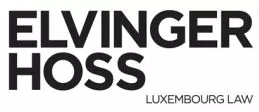Regulation (EU) 2023/1114 of 31 May 2023 on markets in crypto-assets ("MiCA") was published on 9 June 2023 and will apply as from 30 December 2024. The main objective of MiCA is to provide legal certainty for crypto-assets not covered by existing European financial services legislation and introduce uniform rules for service providers and issuers of crypto-assets at the EU level. MiCA also aims at supporting innovation, introducing consumer and investor protection and market integrity, as well as ensuring financial stability.
MiCA creates a regulatory framework for three main types of tokens: utility tokens, asset-referenced tokens ("ART") and e-money tokens ("EMT"). It also brings about major changes regarding trading platforms and other financial services.
MiCA defines utility tokens as a "type of crypto-asset that is only intended to provide access to a good or a service supplied by its issuer". The legal entity issuing utility tokens will have to prepare a white paper containing information about, inter alia, the issuer, the crypto-asset and the risks involved. However, contrary to ARTs and EMTs, utility tokens may be issued and traded on crypto-assets trading platforms without the prior approval of the relevant Member State's national authority.
ARTs, also known as stable coins, purport to maintain a stable value by referencing another value or right, or a combination thereof, including one or more official currencies. The issuance of ARTs is restricted to legal entities established in the EU and must be authorised beforehand by the competent authority except in specific cases. As part of the approval process, a legal opinion is required in order to confirm that the ARTs do not qualify as financial instruments, electronic money, deposits or structured deposits.
The third type of crypto-asset regulated by MiCA, namely EMTs, is "a type of crypto-asset that purports to maintain a stable value by referencing the value of one official currency". Contrary to ARTs, they should only be used as a medium of exchange and cannot be treated as a deposit. Only credit institutions authorised under Directive 2013/36 /EU or electronic money institutions authorised under Directive 2009/110/EC may issue EMTs. A white paper must be published beforehand.
To enhance security, MiCA also regulates crypto-asset service providers providing custody and administration of crypto-assets on behalf of clients. Such providers will have to conclude an agreement with their clients, keep a register of positions and establish a custody policy.
Finally, MiCA sets out rules for crypto-asset trading platforms. Crypto-asset service providers operating a trading platform for crypto-assets will notably have to determine (i) the policies, procedures and the level of fees, if any, for the admission to trading, (ii) non-discretionary rules and procedures to ensure fair and orderly trading, (iii) conditions for crypto-assets to remain accessible for trading, and (iv) conditions under which trading of crypto-assets can be suspended.
The content of this article is intended to provide a general guide to the subject matter. Specialist advice should be sought about your specific circumstances.


